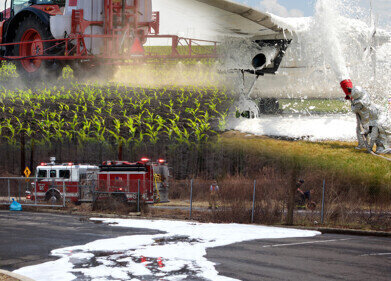Groundwater monitoring
Radioactive isotopes found in groundwater at Fukushima nuclear plant site
Jun 19 2013
Tokyo Electric Power Company (TEPCO) has made another discovery concerning the groundwater at the damaged Fukushima No.1 nuclear power plant. The nuclear plant has been plagued with issues since being severely damaged in the earthquake and subsequent tsunami of 2011. The most recent findings have shown that strontium-90 is currently present in the groundwater found at the plant at 30 times the legal level.
Testing of groundwater that had accumulated in a well dug by TEPCO last month has revealed the high levels of strontium-90. The radioactive isotope was found in groundwater surrounding the turbine hall of Reactor No.2. The fission of plutonium and uranium in a nuclear reactor creates strontium-90 as a by-product.
TEPCO has announced its suspicions that the radioactive isotope was released during the initial problems the plant faced following an accident in April 2011 in which radioactive water at the facility was spilled. The company has said that it is possible that the fallout from this incident is only now being detected in the area's water table. TEPCO has also said that it is unlikely that any of the detected strontium-90 had made its way into the ocean.
As well as recent testing showing a 100-fold increase in strontium-90 levels on last year's results, tritium has also been found in samples at eight times the legal rate. Although tritium is a less harmful substance than strontium-90, its discovery furthered the difficulties TEPCO was facing in achieving approval for its plan to dump excess groundwater into the ocean.
The latest discovery of radioactive contamination comes just as Japan's Nuclear Regulation Authority sets deadlines for the restart of the country's nuclear reactors that have been idle since the 2011 natural disasters. The authority has finalised the minimum safety regulations that a nuclear plant must meet before being allowed to restart. It is not clear whether the No.1 nuclear plant will be able to meet these guidelines and be able to restart its idle reactors.
Digital Edition
IET 35.2 March
April 2025
Air Monitoring - Probe Sampling in Hazardous Areas Under Extreme Conditions - New, Game-Changing Sensor for Methane Emissions - Blue Sky Thinking: a 50-year Retrospective on Technological Prog...
View all digital editions
Events
May 10 2025 Karachi, Pakistan
May 11 2025 Vienna, Austria
May 11 2025 Seoul, South Korea
Salon Analyse Industrielle & Instrumentation
May 14 2025 Paris, France
May 15 2025 Istanbul, Turkey



















